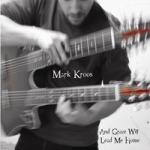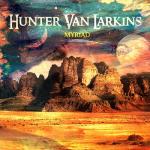 Last November I happened to be scanning a community newspaper and saw a picture of a young guy playing an Ovation doubleneck. His name was Mark Kroos and he was doing a gig at a local church. The article called him “one of the only touring doubleneck guitarists in the world.” It referred to his “incredible tapping technique,” and mentioned influences such as Michael Hedges and Andy McKee. Well, that was sufficiently intriguing for me. Long story short, Kroos’s playing was impressive. But the Minneapolis church’s thin-sounding PA system didn’t—I suspected—nearly do him justice. Getting acquainted with his debut album And Grace Will Lead Me Home confirmed that.
Last November I happened to be scanning a community newspaper and saw a picture of a young guy playing an Ovation doubleneck. His name was Mark Kroos and he was doing a gig at a local church. The article called him “one of the only touring doubleneck guitarists in the world.” It referred to his “incredible tapping technique,” and mentioned influences such as Michael Hedges and Andy McKee. Well, that was sufficiently intriguing for me. Long story short, Kroos’s playing was impressive. But the Minneapolis church’s thin-sounding PA system didn’t—I suspected—nearly do him justice. Getting acquainted with his debut album And Grace Will Lead Me Home confirmed that.
There are, of course, masters who’ve taken the tapping approach to exalted levels—names like Emmett Chapman (of Chapman Stick fame), Hedges, Stanley Jordan, Eddie Van Halen. And purely from the perspective of hammer-on/pull-off virtuosity, Kroos—trained as a jazz guitarist, with three years in a touring ska/punk band—definitely knows a thing or two. With two six-string necks (the Ovation’s upper 12-string neck is strung and played as a six-string) going simultaneously, he creates a magnificent sound. Think sheets, waves, cascades of steel-string goodness—with shimmering treble lines and rumbling bass. Kroos’s two-fisted playing perhaps has more in common with the piano than the guitar— really and truly lap piano. Kroos also plays singleneck on a few items, to similar effect, and some of his tunings include Open D, DGDGAD and DADGAD. Continue reading




